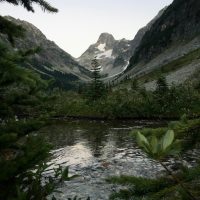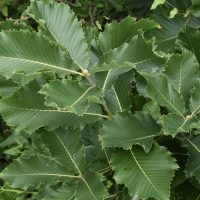Reflections from Rare Care Intern Megan Rodenbeck

While clinging to an exposed ledge looking for Tisch’s saxifrage (Micranthes tischii), a very charming saxifrage, I realized the lengths I would go to just to look at plants. I found I had a healthy respect for heights, but was able to forget how high up I was when I finally saw its ruffled, waxy leaves tucked into a rock crevice.
Read moreReflections from Rare Care intern Marina Kochuten

From the moment I learned about the Rare Care program I knew that I just had to be a part of it. I read about the work that goes into monitoring these rare plants and remember thinking to myself “I could get paid for that?!” Overjoyed to be selected as a 2020 intern, I started planning my summer as my first field season and I quit my job scooping ice cream a few blocks away from campus where I had worked all through undergrad.
Read moreSelected Cuttings from the Washington Park Arboretum and the Garden of Virginia L. Morell

Virginia L. Morell was an avid gardener, president of the American Holly Society, Arboretum Foundation board member, and volunteer at the Washington Park Arboretum. Virginia and Jean L. Haigh started the Arboretum ‘Saplings’ Program, which they ran for two years. This program was taken over by UW Botanic Gardens Youth and Family Education and now serves thousands of school children each year.
Read moreMore Summer Specials at the Washington Park Arboretum

1) Clerodendrum bungei Rose Glory Bower
Rose Glory Bower (of the Lamiaceae family) is native to China and northern India.
This shrub spreads aggressively by root suckers and has become invasive in the South.
The rosy-red flowers are very showy and fragrant and attractive to butterflies.
You can find Clerodendrum bungei along Azalea Way below the Winter Garden.
2) Hydrangea serrata ‘Blue Bird’ Blue Bird Hydrangea
The Blue Bird Hydrangea was an Royal Horticulture Society Award of Merit winner in 1960.
Read moreSummer Specials at the Washington Park Arboretum

1) Fuchsia magellanica Hardy Fuchsia
The stunning display of pink flowers currently on Fuchsia magellanica are enjoyed by hummingbirds and humans.
This widely cultivated small ornamental shrub is native to Argentina and Chile.
You can find this and other Fuchsia sp. blooming in the Pacific Connections Garden.
2) Lagerstroemia ‘Natchez’ Natchez Crape Myrtle
An attractive small deciduous tree with slender, mottled stems.
Read moreAustralian Inspiration at the Washington Park Arboretum

1) Ozothamnus rosmarinifolius ‘Silver Jubilee’
The silvery foliage serves as a lovely backdrop for the dense clusters of white flowers in spring.
This shrub can grow to about four feet tall and wide and is a member of the Asteraceae family.
You can find Ozothamnus rosmarinifolius ‘Silver Jubilee’ blooming in the Australian portion of the Pacific Connections Garden.
2) Callistemon pityoides (Mt.
Selected Cuttings from the Center for Urban Horticulture

1) Buddleja longiflora
This rare evergreen butterfly bush is native to the Serra do Caparao mountains in Brazil.
What makes this Buddleja species unique from other species and cultivars is its stunning, long tubular orange flowers that are paired in three-to-five flowered cymes.
Its flowers, plus striking white tomentose leaves and small stature (four feet), make this a worthy plant to introduce into the nursery trade.
June 2020 Plant Profile: Tilia americana var. heterophylla

I chose to profile the white basswood tree because it’s a North American Linden of impressive size in our collection. Its common name, basswood, is derived from the tough fibrous inner bark called “bast” that is used to make ropes, baskets, mats and many other lightweight wood products. The “white” refers to the undersides of the leaves that are covered with a white indumentum of stellate hairs.
Read moreSelected Cuttings from the Home of UW Botanic Gardens Horticulture Manager, David Zuckerman

1) Buddleja globosa Orange Ball Buddleja
This Chilean large and lanky quasi-evergreen shrub comes true to name when in flower.
It is now festooned with 8-10 fragrant orange ball-shaped flowers arranged in terminal panicles.
Hummingbirds are fun to watch while hovering and feeding over each “ball” for several seconds.
You can view several blooming now in our Pacific Connections Chilean Gateway Garden.
